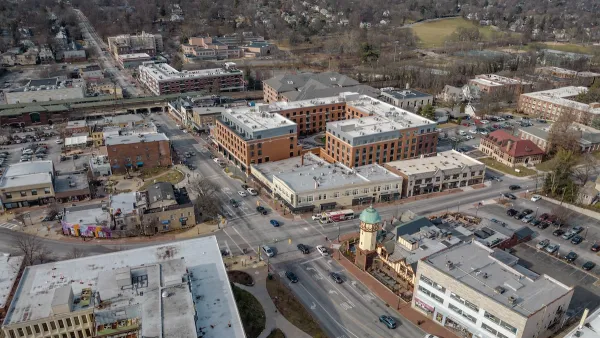Wendell Cox looks at how single-family detached housing came to be, and why it's likely to remain a popular option for the middle class.
"It may be that it was called a dream first in America, but its beginnings go back much further. For much of human history, most people who lived in large cities were forced to put up with virtually inhuman densities. By definition, large cities were compact. Indeed, they were often not a lot larger in their geographical expanse than smaller cities. Why? To be efficient labor markets, cities had to be small, so that all of the workers could get to all of the jobs – and in those days the only way to get around was by foot. As cities got larger, especially during the industrial revolution, densities rose in some neighborhoods to 200,000 and more per square mile. The lower East Side of New York topped out at 375,000 in the 1910 census and has since dropped by 75 percent."
"But not everyone lived in such crowded conditions. Throughout history, the most wealthy have had their castles, estates and mansions. This was true in the cesspool of 19th century American and European industrial cities, just as it was in Rome.
The coming of mechanized transport, especially urban and suburban commuter rail systems changed all this. In the latter half of the 19th century the upper middle class began to enjoy a small modicum of estate life."
FULL STORY: Of Houses, Castles and the Universal Dream

National Parks Layoffs Will Cause Communities to Lose Billions
Thousands of essential park workers were laid off this week, just before the busy spring break season.

Retro-silient?: America’s First “Eco-burb,” The Woodlands Turns 50
A master-planned community north of Houston offers lessons on green infrastructure and resilient design, but falls short of its founder’s lofty affordability and walkability goals.

Delivering for America Plan Will Downgrade Mail Service in at Least 49.5 Percent of Zip Codes
Republican and Democrat lawmakers criticize the plan for its disproportionate negative impact on rural communities.

Test News Post 1
This is a summary

Test News Headline 46
Test for the image on the front page.

Balancing Bombs and Butterflies: How the National Guard Protects a Rare Species
The National Guard at Fort Indiantown Gap uses GIS technology and land management strategies to balance military training with conservation efforts, ensuring the survival of the rare eastern regal fritillary butterfly.
Urban Design for Planners 1: Software Tools
This six-course series explores essential urban design concepts using open source software and equips planners with the tools they need to participate fully in the urban design process.
Planning for Universal Design
Learn the tools for implementing Universal Design in planning regulations.
EMC Planning Group, Inc.
Planetizen
Planetizen
Mpact (formerly Rail~Volution)
Great Falls Development Authority, Inc.
HUDs Office of Policy Development and Research
NYU Wagner Graduate School of Public Service





























